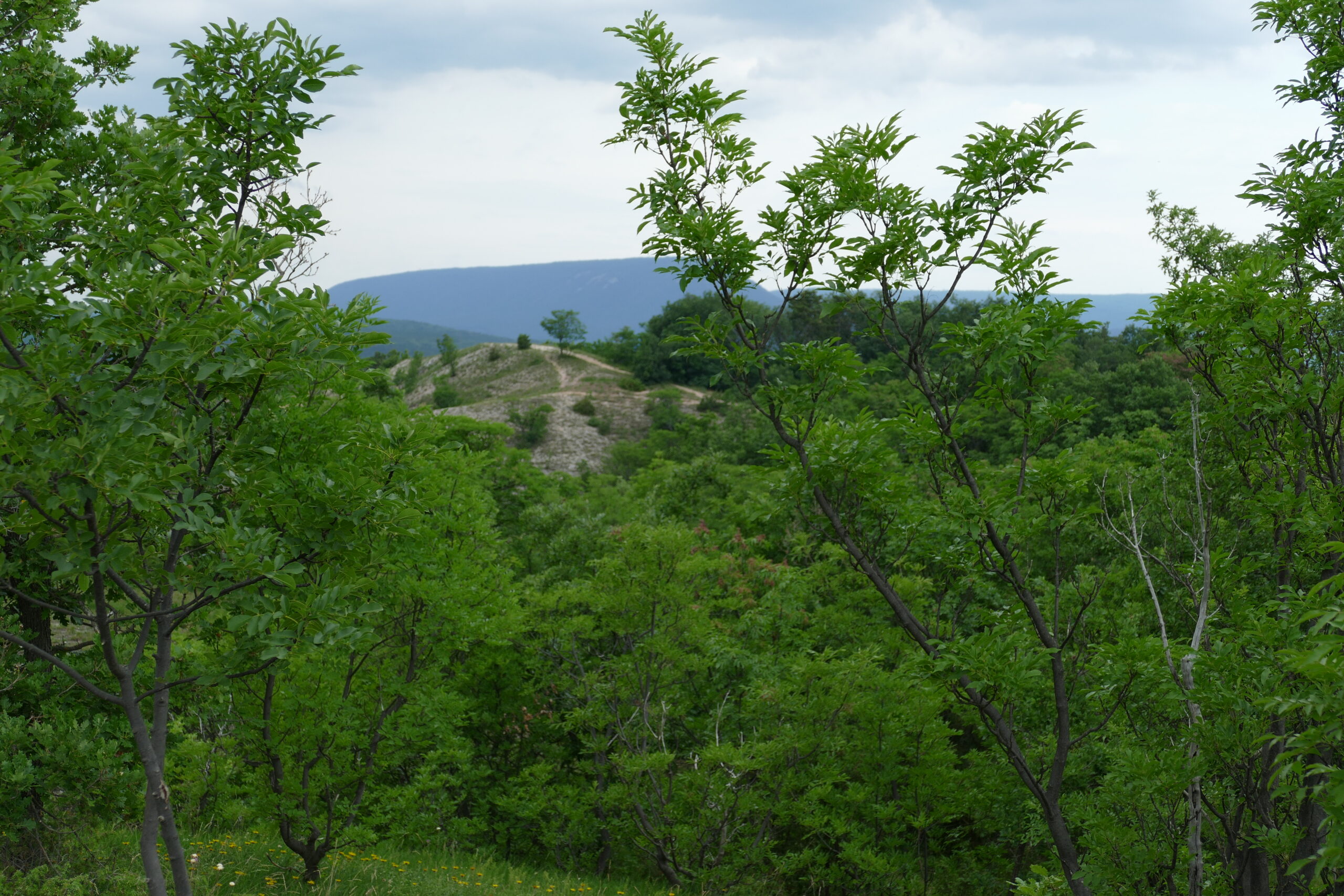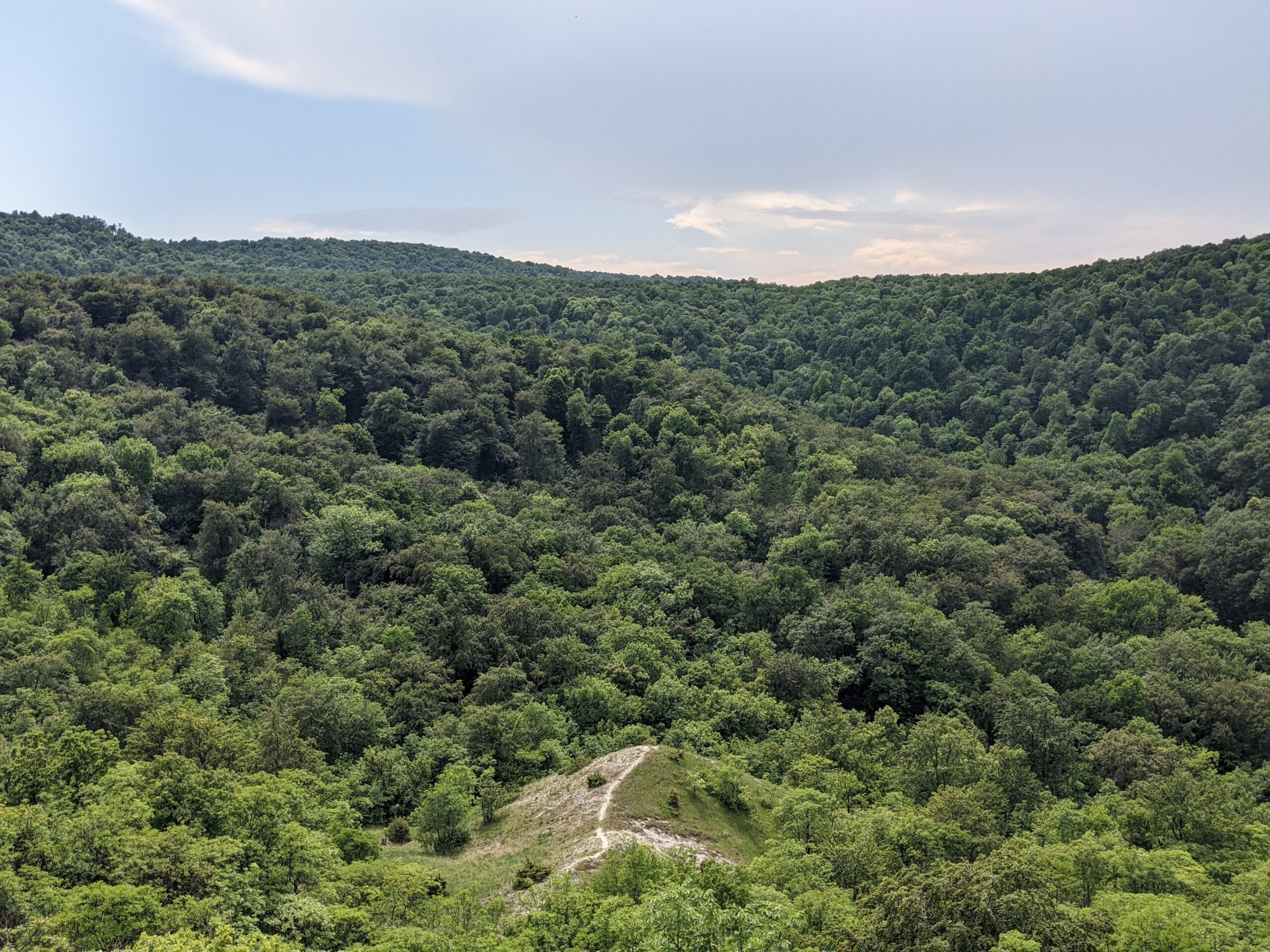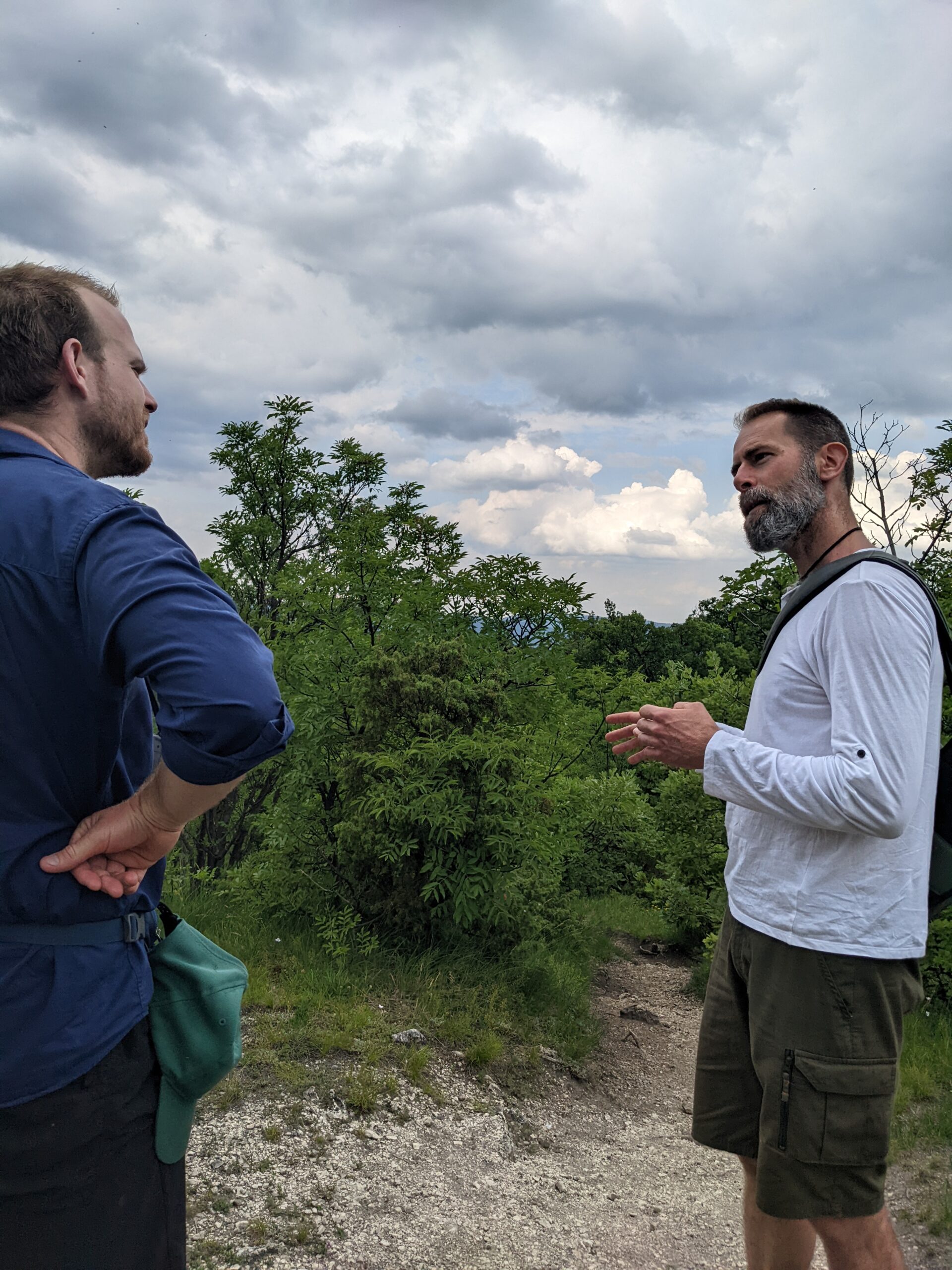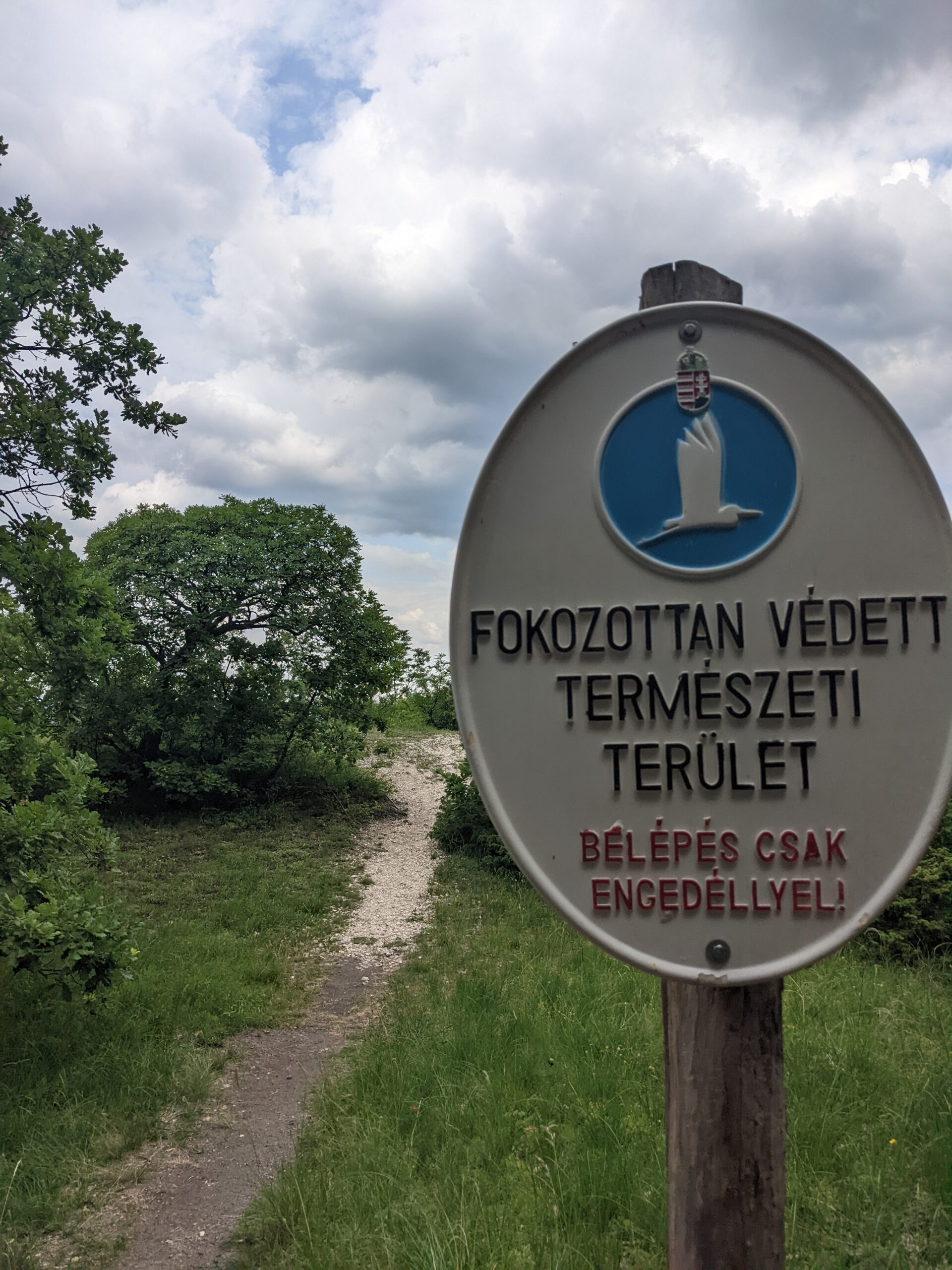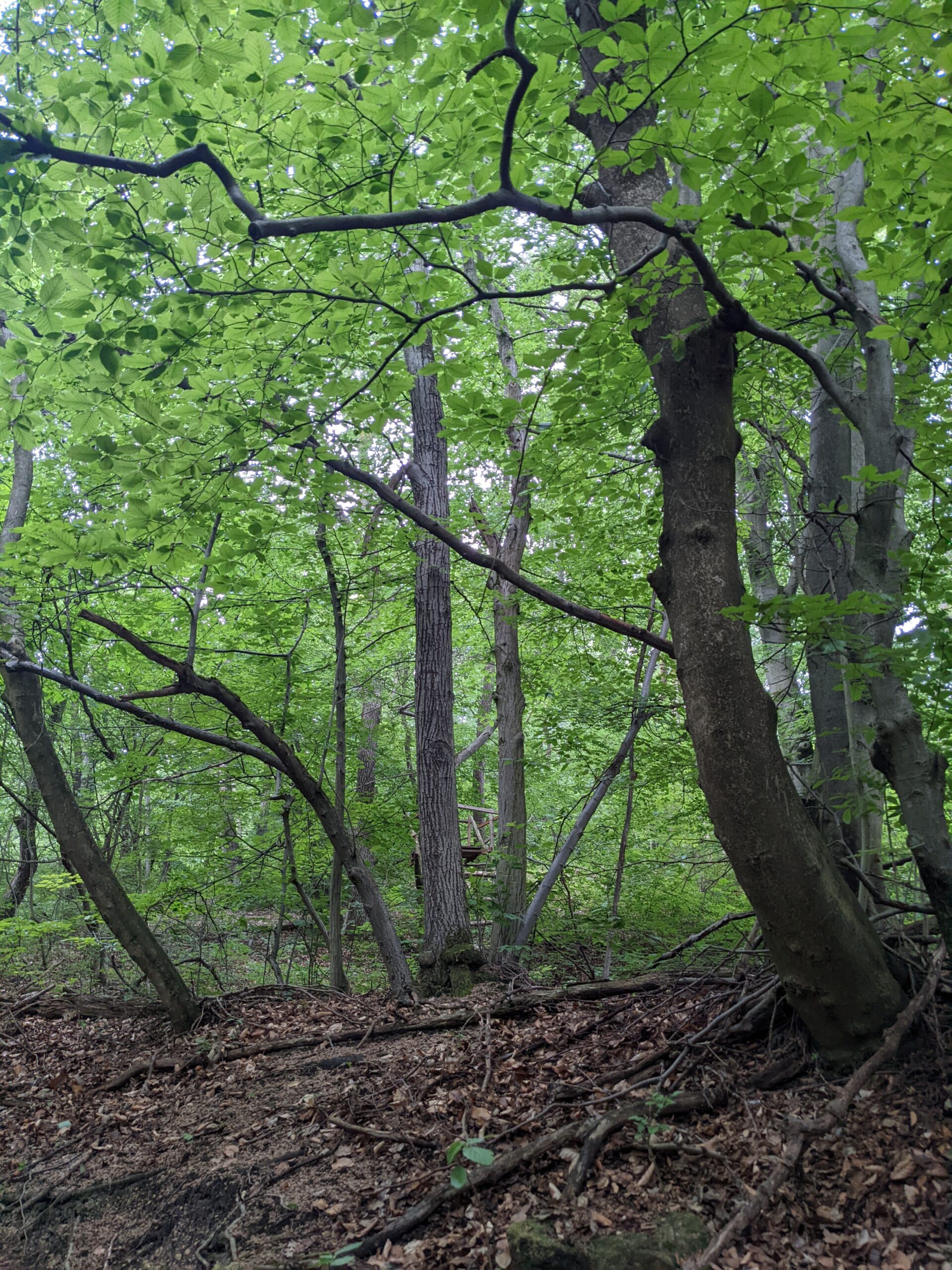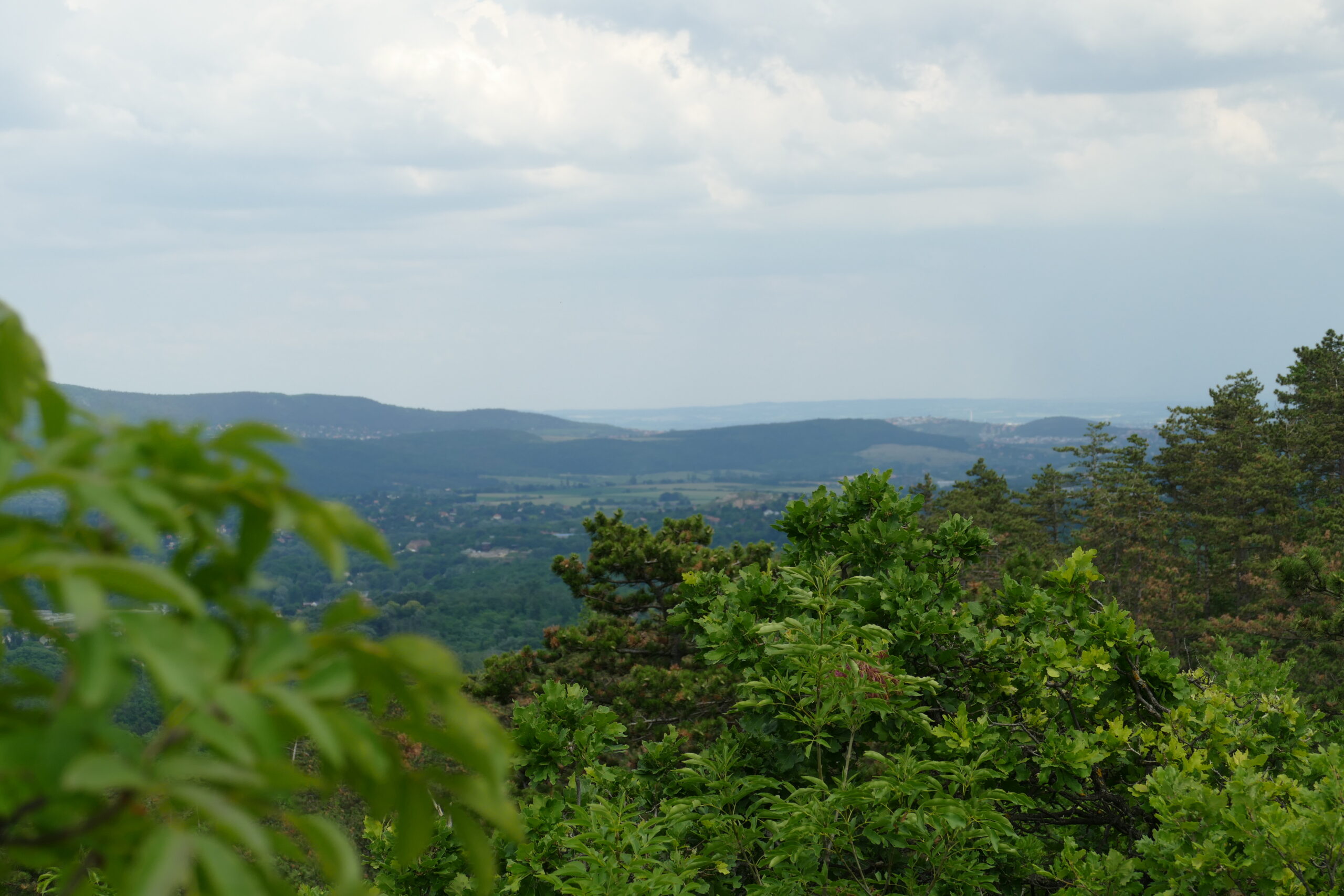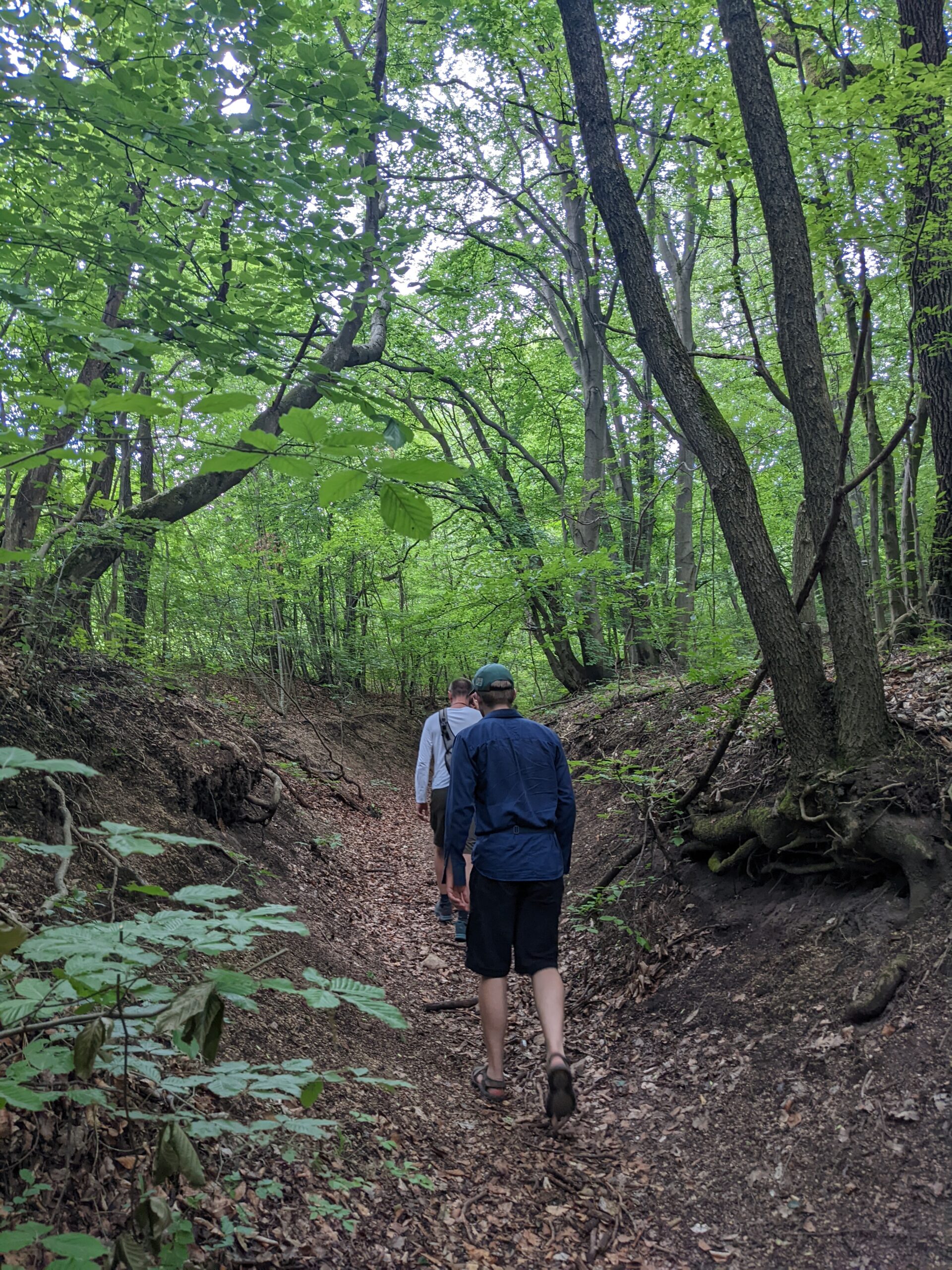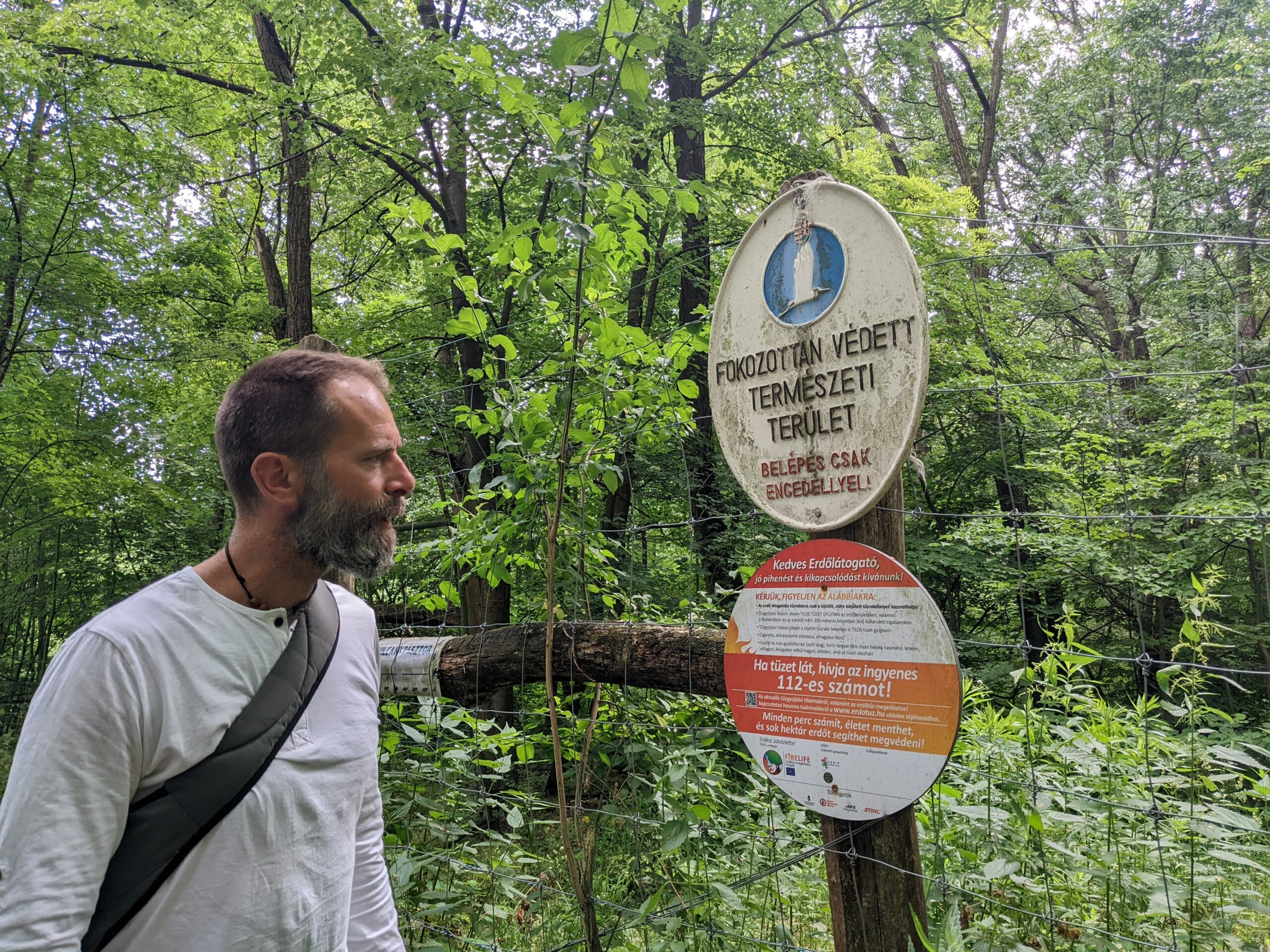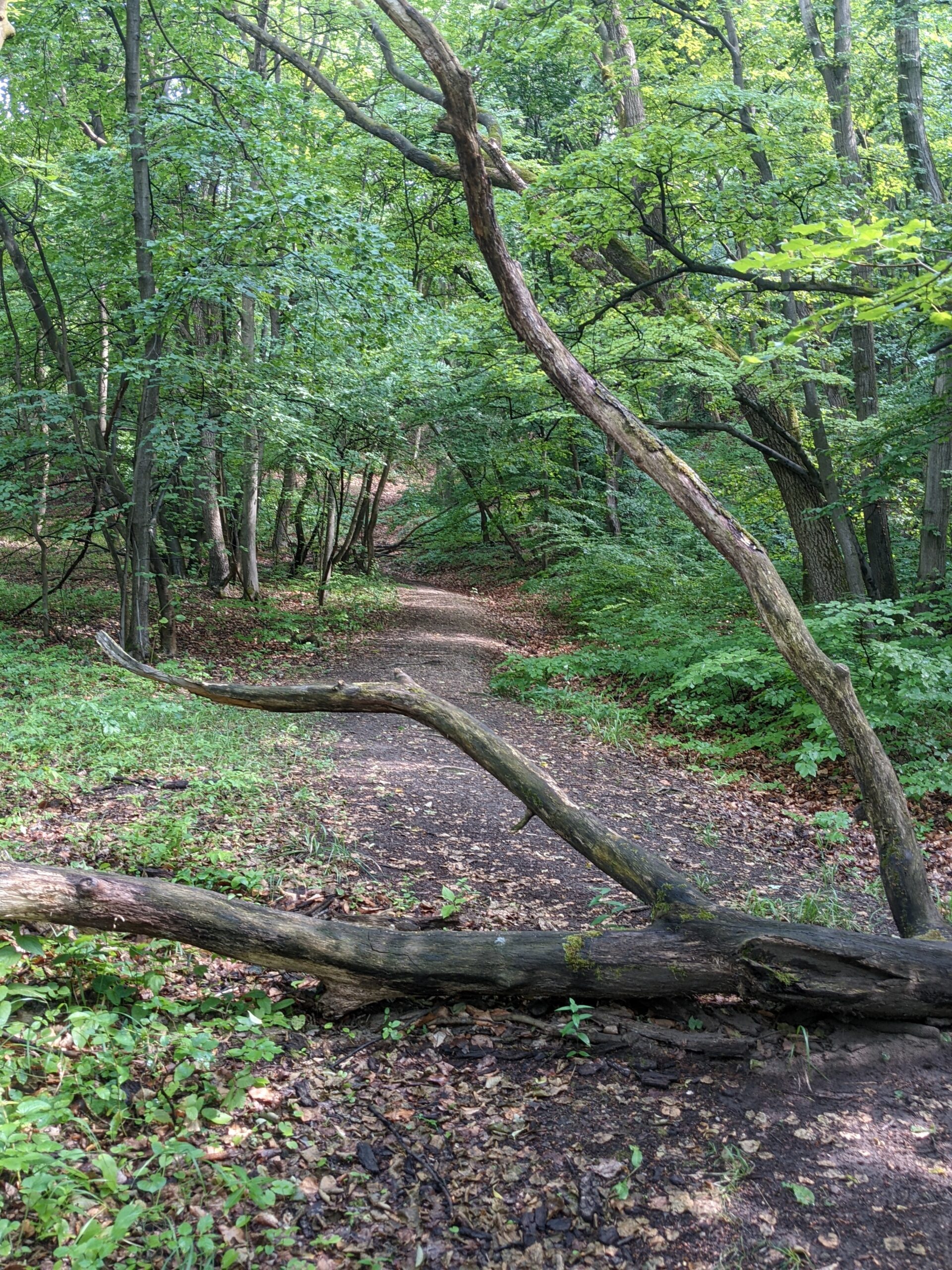How would you react if you were told that in the neighboring forests just at your doorstep, scientists defined a completely new plant species? Moreover, that this species can be found nowhere else on the planet, only there, close to your home? We would be fascinated, and so were the inhabitants of Pilisszentiván, a small village in Hungary, when Vince Borbás found and defined a new species of plant, the Linum dolomiticum in the closeby Szénás hills in 1896. On our visit to Duna-Ipoly National Park Directorate, we were guided by Gyula Kiss, project manager of the National Park Directorate to one of his project sites, the Szénás hills, to visit this unique plant, talk about the area and the national park itself.
A species only found on one square kilometre
The Linum dolomiticum is an endemic plant species, meaning that it exists only in one geographical region. It is also a relict species from the pre-glacial period, with a limited occurrence of about 140 ha in the Szénás hills in Hungary. Vince Borbás, a great Hungarian botanist, had spent a lot of time in the Szénás hills, when he discovered this plant over 120 years ago. He has not only proven that what he found was a new species, but that this small plant has survived at least 120.000 years, and its only territory on the planet is this 140 ha area close to Budapest. But what is so special about this area? We are excited to find it out, as we meet up with Gyula in Budapest, to jointly visit the site.
While we are driving out of the capital, Gyula introduces the area we are about to visit. The Szénás hills have been considered one of the most important natural areas in Hungary since the late 1800s. These dolomite hills are home to an exceptional amount of endemic and relict species. Its southern slopes, with their dry, warm microclimate, are separated from the cold northern slopes by only a few metres. This meant that through times of great climatic changes, the vegetation was able to survive by migrating only a few metres. On the cold northern valley slopes, various glacial plants survived that went extinct in the rest of the Carpathian Basin as they moved higher. So nowadays, they can only be found in higher altitudes.
Due to this special conservation value, the Szénás hills have been recognised by the Council of Europe in 1995 with the award of the European Diploma, as one of the only three areas in Hungary that received this recognition. The Diploma is awarded to protected natural areas of outstanding importance for the conservation of Europe’s geological, biological or landscape diversity. The European Diploma recognises not only the unique biological or landscape values of the site, but also the effectiveness of the conservation management undertaken to protect them.
The Duna-Ipoly National Park Directorate – operating on 13.000 km²
We finally arrive at the Szénás hills, and start hiking uphill. We are now in a strictly protected area, where entrance is only allowed with permission. We are thankful that Gyula agreed to be our guide today, and we can take some time to explore this area together.
The conversation moves to the National Park structure. The Duna-Ipoly National Park Directorate was founded in 1997 and is one of ten national parks of Hungary. It is one of the most diverse national parks in the country, as it is the meeting point of big rivers, the hills of the Carpathians and the Pannonian plains. It covers the Pilis, Visegrád, and Börzsöny Hills, as well as part of the Danube and the Ipoly Valley, all located in the vicinity of Budapest. Talking to Gyula, we find out that national park directorates in Hungary have a different management coverage as in other countries. Every inch of Hungary is distributed between the ten national park administrations, which means that all protected areas outside of the territory of the national park itself belong to the management of the responsible national park directorates. Moreover, concerning all nature conservation topics within those counties, the national park directorates have an important voice. In this sense, the Duna-Ipoly National Park Directorate operates in Pest, Fejér and Komárom-Esztergom Counties, adding up to an area of approx. 13.000 km².
Therefore, rangers have an important role in the work of the national park directorates. The Duna-Ipoly National Park Directorate has approximately 40 rangers employed across the three counties, who have a diverse set of tasks. Their principal duty is the guarding of areas, habitats, and species under protection and have the authority to give out fines for anyone who damages natural values. Moreover, they take part in implementing concrete conservation activities on site, support habitat monitoring and last but not least guide visitors and participate in youth education.
How to protect an area of outstanding conservation importance
The Szénás hills are part of the Buda Landscape Protection Area. As we get up to the ridge (which is named Borbás ridge, honouring Vince Borbás´s nature conservation work), we see the first specimen of Linum dolomiticum. Part of the area surrounding us was declared a forest reserve in 1997. Therefore, all human (especially forestry) interference of any kind is forbidden here, so that undisturbed natural processes can be studied.



Unfortunately on our visit we couldn´t see the Linum dolomiticum blossoming, but on the right photo you can see it in full bloom (Photo credit: Karlné Menráth Réka, DINPI)
The National Park Directorate participates in various EU-funded projects that aim to protect the natural heritage within the national park and other protected areas. The particular project Gyula is working on now connected to the Szénás hills is called LIFE endemic PANALP, and focuses on the conservation of endemic species and dry grassland habitats in the contact zone of Pannonian and Alpine bioregions. Within this project, and also within other projects, Duna-Ipoly National Park Directorate cooperates with the Slovak NGO BROZ, who we met up with on our visit to the Veľkolélsky island. Within this project, partners aim to work together to improve the conditions of valuable habitats such as the Szénás hills, and ensure sustainable care for the restored areas. Another proof of how important and fruitful cooperation, and specifically international cooperation can be to care for shared and connected ecosystems.
Gyula explains that concerning the Linum dolomiticum, there has been a marked downward trend in population size, and currently there are about 10 000 specimens left on this 140 ha area. Unfortunately, although the area is closed for the public, visitors still enter and often leave the trails, often trampling the precious plant. Other threats to the species are damage by animals and overgrowth by black pine. Therefore, within the project LIFE endemic PANALP, Gyula and his colleagues are monitoring the Linum dolomiticum population, and aim to introduce conservation measures that will help the population grow. To the question whether this species could be planted elsewhere, Gyula tells us that until now no plant individuals could survive the planting in another soil, outside of the Szénás hills. They suspect that it might be the underground fungal network that connects these plants together on the Szénás hills, ensuring the transfer of water, nitrogen, carbon and other minerals between the plants.
Studying the past and protecting the present, to learn for the future
One might ask: why is it important to put so much effort into the protection of one single species? Gyula´s answer comprises its essence:“It would be a pity to lose this unique species that survived for so long, through the insufficient protection of its habitat. Therefore, Duna-Ipoly National Park Directorate rather aims to strengthen local pride in being a community that lives so close to a unique conservation area, and educate locals as well as visitors about this locality and its natural values.”
One positive example of this local pride is that the Linum dolomiticum is portrayed in the coat-of-arms of the village Pilisszentiván, and the National Park Directorate has recently rebuilt a specific visitor centre in the village, connected to the Szénás hills.
Learning about the Linum dolomiticum has also a climate change-related importance. Ranging from swamps to mountain peaks, scientists are discovering new plant and animal species that survived previous eras of climate change. Therefore, looking to the future, studying climate relict species, such as the Linum dolomiticum could help us understand how some species may survive in the coming centuries.


